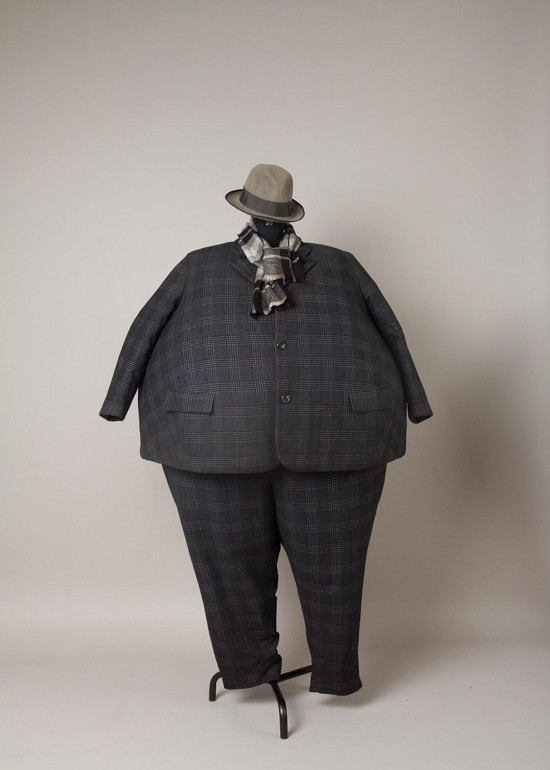
The Story Behind The Pot Bellies of Edeka’s Eat Well Parable
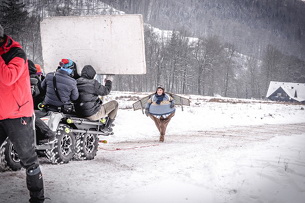
German supermarket Edeka has riffed off the old adage “you are what you eat” in its latest campaign, which is aiming to get families to eat healthier. Titled ‘Eatkarus’ (the name of the ad’s protagonist), the film is an otherworldly, modern-day fairy tale. A town of overweight residents sport over-the-top, perfectly cylindrical pot bellies. But underneath the whimsy of this fantasy world lies a serious message that too many people are not eating properly. It’s ruffled a few feathers but also generated good conversation around the subject. What’s more, Edeka, its agency Jung von Matt and director Alex Feil (repped by Tempomedia) saw it as a story that needed to be told. The brand is no stranger to a little controversial advertising either – its 2015 Christmas commercial (which was also created by Jung von Matt and directed by Alex) in which an elderly man fakes his own death in a desperate plea to get his family together was comfortably the most watched and discussed ad from that Christmas season.
LBB’s Addison Capper wanted to know more about why and how Eatkarus came to be. He chatted with director Alex to find out.
LBB> What were you thinking when this script came in? It’s quite different from most supermarket ads! Why did it appeal to you?
AF> When I get a script, there are two things that are important. Firstly, would I buy the product? Secondly, do I connect with the message? Here we don’t have a product, but more a company. But I think that our world now isn’t only driven by politics – it is more in control of the companies. That’s why companies have a huge responsibility for our society.
Most companies are afraid of scandals or being at the centre of discussions, but this script was bold. Edeka is not an ordinary supermarket though, that’s for sure – in the past we had the Christmas commercial with the grandpa faking his own death, which brought discussions around spending time with family. When I first spoke with Jung von Matt and Edeka, we spoke about this and the potential for controversy, but Edeka liked the story and they went with it. I think that’s bold and it’s something I really like.
They saw it as a topic that needed to be brought to the table. Food is such an essential part of our life, but it has become a side activity to our busy lives. In the European region, according to the World Health Organisation, one in three 11-year-old kids are obese. This is a serious issue. But most serious is that this is not the fault of the kids. Even though some people might not like it, I think it’s important to bring it up.
LBB> It’s quite a bizarre ad but with an important message at its core – how tricky was it to get that balance right?
AF> If something becomes tricky, I try to break it down and make it as simple as possible – so my five-year-old daughter can understand it. The message within this film is really quite simple – you are what you eat. It was a good feeling to be able to show this story to my kids and they can understand it. But the story is much more than just about nutrition. It is about a boy who doesn’t just go with the flow. It is a story about someone who believes in something and fights for it, and even if he fails several times, he never gives up and keeps on going. At the end, he is successful. That is another major lesson that I teach my kids. That’s the bigger message in this film.
It’s definitely a story too; it’s not reality. It’s stimulation for your mind to begin thinking about it. There is a lot of room for interpretation and hopefully it serves as entertainment too, more than just a commercial. But to bring that all together, I thought it would be great to make it a modern fairy tale – and that’s what I did.
LBB> It’s got a real fantastical look to it – which I guess is down the fairy tale idea. What were your aims with the overall aesthetic?
AF> We wanted to create a modern fairy tale, but what does that mean? On the one hand, it should have these real elements and it should feel timeless. There are contemporary elements – Eatkarus’s sister has a smartphone and there are cars – so it’s already an interpretation of our world.
When it came to the colour code, there were cold blues for the world and warmer, friendlier colours for the nature and the conclusion at the end. They were both elements to emphasise the story. But in general, it was a case of being bizarre, not too real, and fantastical. The DOP found the solution for it with a lens that added the final fairy tale touch to it.


LBB> How did you create the ‘round’ effect?
AF> This was created with two elements. Firstly you have the bodies, and then the faces. The bodies involved a huge process to find the right shape for them. We discovered some costume designers in Berlin who did something similar for a theatre show. I saw the pictures and said right away that I wanted that ball effect, without knowing that each costume had a custom fit and each body has to fit the person. So we had to do a casting for each extra, in order to get the sizes right – so that was quite complicated!

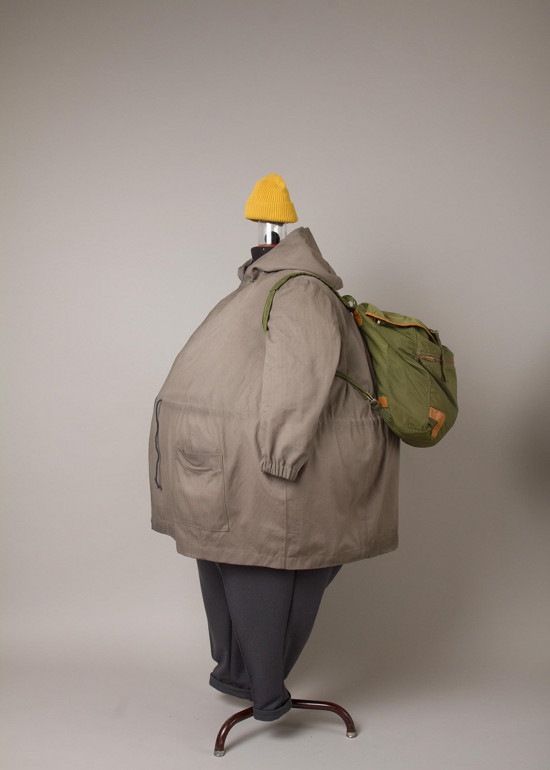
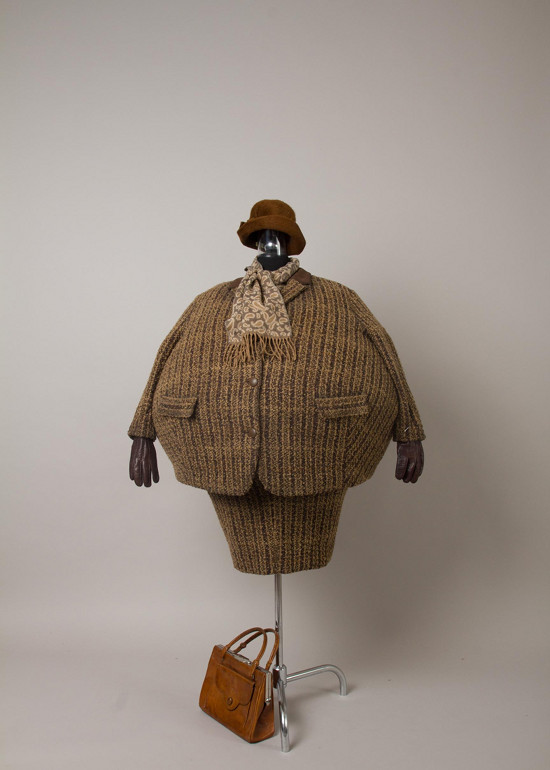
For Eatkarus’s face, we debated two options. First, we looked at casting a chubby boy and making him slimmer in post production, but this proved way too complicated. So we decided to cast a slimmer person – his name is Josef – and used prosthetic makeup.
LBB> I can’t help but love the fat bulldog – tell us a bit about the inspiration behind him. Why a bulldog?
AF> My kids always play ‘the pretend game’ – where everyone is red, etc. In this film, we were pretending that everyone is round. But it’s not just the people, it’s also the animals. So, I wanted to include an animal and decided on a dog.
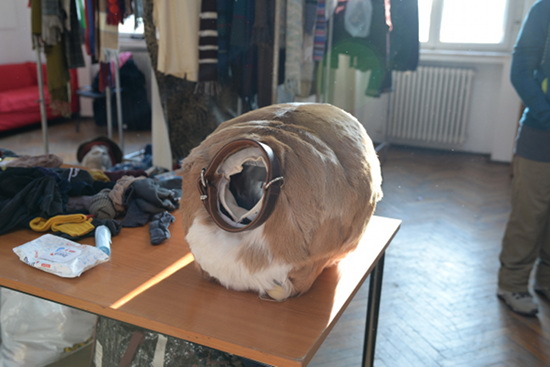
I thought about the inhabitants of this town and they are sluggish and lazy – it’s not their fault, they just don’t know any other way! So I needed a dog that had that character – almost unwilling to use energy. And we found Renate! When I saw pictures of her, I instantly knew she was the one for this film.
The problem was that she wasn’t round, so we had to create a fat suit for her too. To get the fur correct and create the fat suit for this animal was a masterpiece. Working with her was amazing, I felt like we had this inner dialogue together. “Alex, you guys are crazy. You put me in a fat suit. What are you doing here?” I had a lot of fun with Renate the bulldog.
LBB> What are your most memorable moments?
AF> Well, Josef is definitely my hero. He had to withstand a lot. The makeup, the mornings, the heavy fat suit, the cold temperatures, the flying stunts – although he enjoyed those the most! But he had to really do a lot considering he’s only 10 years old. But we made a deal about how he could pay me back for all I had put him through. And eventually we agreed on a huge cake being smashed into my face at the end. Right after we wrapped, he did not hesitate for a second! So that was huge fun – although more for him than me. But when I saw the satisfaction on his face, but also my crew’s faces, I was happy that we only had one cake on set…
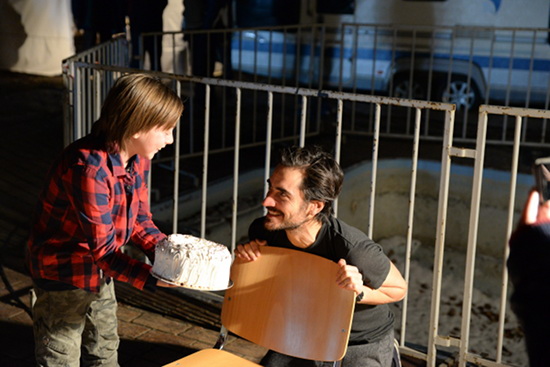
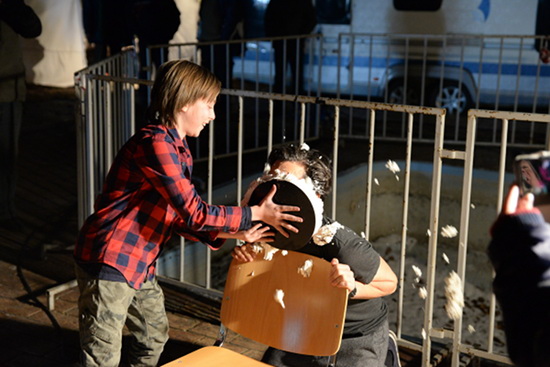
LBB> Tell us a bit more about the setting. It’s really intriguing – which again must be to do with the fairy tale idea!
AF> As I said before, it was important for us to create a fairy tale feeling, but with a connection to the real world. We were searching all over the world, so huge thanks to all of the production companies that offered advice to us. We ended up with a shortlist of three locations, so my production designer went to scout them. He found a backlot, and when we looked at the pictures we knew straight away that it was right. It was actually a BBC set built for a documentary about Boston, I think, at the end of the 19th century. It was just perfect as a basis to build upon and create that juxtaposition of the boring world of the town and positive world of the nature.

LBB> What were the biggest challenges and how did you overcome them?
AF> We used prosthetics to show Eatkarus before he was slim. We were just about to start shooting but we wanted to do a final makeup test before we began. But the luggage didn’t make it – it was stuck at Heathrow airport. Our first shooting day was in the middle of nowhere, three hours away from the next big city. So how could we deal with that? The makeup artist just improvised. He went shopping, got some stuff and did an amazing job!
And last but not least. As I said, the entire wardrobe was custom made for each character. We thought about the design, the colours, the cut and how it keeps it ball shape, etc. We did a lot of tests into which costumes best showed off the ball shape, so we clearly had that shape and not just fat people. We thought about everything here. But when we came close to the shoot and did the fittings, my producer came to me and said, “Alex we have a problem. How do they go to the loo?” First of all, they don’t fit through the door. Secondly, it takes ten minutes to get out of the suit! So ten minutes to take it off, ten minutes to do their business, and ten minutes to get it back on again. This isn’t just a quick toilet break! It was a huge problem. But Timm, thanks to his greatness as a producer, figured out a plan. He made emergency tents right next to the set, where people waited to help our actors be as fast as possible. He also spoke to everyone and devised a system to try and get people not to each too much food – to try and keep nature at bay!

